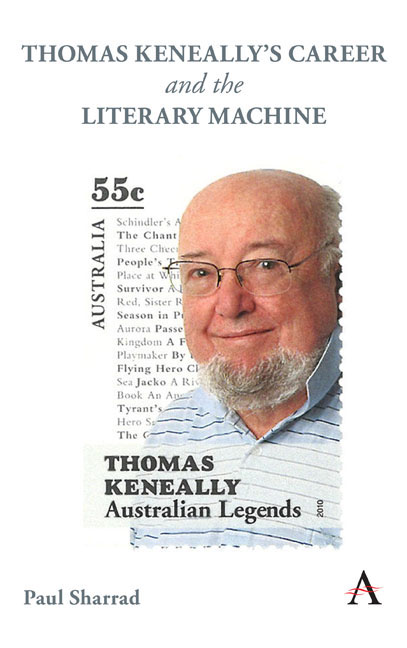Summary
I confess that my interest in writing this book stems from anomalies that mostly concern only literary scholars, mainly those who have worked in Australia. One of my colleagues still attributes her literature-teaching career to being excited by Bring Larks and Heroes in her undergraduate studies. Another colleague rather wearily wonders why anyone would bother to write about Tom Keneally. I have tried to tease out the values and cultural history behind these positions. Added to such academic contradiction is the conundrum that Australia's supposedly ‘best-known’ and ‘most loved’ author is frequently neither our best-reviewed nor our most bought writer. The disparities all relate to literary evaluations that rest upon old distinctions between high and low, literary and popular. These are formed and operate in time and place. However – as I hope this book shows – if the anomalies that call Keneally's career into question are founded on academic concerns and Australian social history, they cannot be resolved unless we go beyond those limitations of space and time. Keneally's career is interesting because it shows the tensions between national and transnational cultural and publishing dynamics. The author quite early on moved out of the common Australian modes of nation-based or expatriate and regularly shuttled around his three main markets and beyond. But he and his books have remained strongly tied to home politics and cultural expectations.
To map Keneally's career, this study has concentrated on describing a pattern of production and reception. In doing so, it has also had to sketch the machineries behind the pattern and the fields in which it made sense. As should be evident by now, Keneally's career rests on such an intricate complexity of factors that a full account would require a team of researchers collaborating across at least three countries. It would be simpler and more thorough to produce a case study showing the networks in and around a single text, but then many of the movements of Keneally's career over time would be left out. I have tried to retain something of the interaction between the author's forward-looking decisions, the retrospective judgements of readers and the framing machineries influencing both. Keneally and his career have been nothing if not protean, and any career is a complex mix of production and reception that changes appearance depending on where, when and by whom it is viewed.
- Type
- Chapter
- Information
- Thomas Keneally's Career and the Literary Machine , pp. 213 - 220Publisher: Anthem PressPrint publication year: 2019



